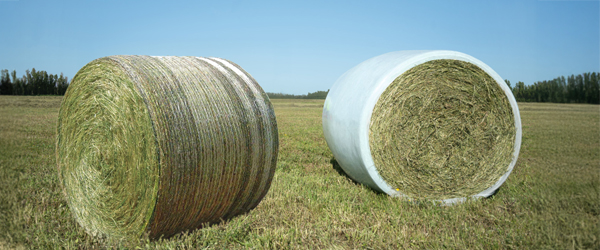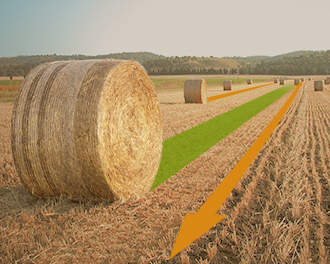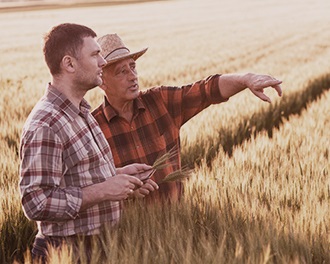Netwrap vs. Net Replacement Film (NRF): Why Netwrap Remains the Smarter Choice for Round Baling
2025
Netwrap vs. Net Replacement Film (NRF): Why Netwrap Remains the Smarter Choice for Round Baling As the baling world evolves,… Read more
Netwrap vs. Net Replacement Film (NRF): Why Netwrap Remains the Smarter Choice for Round Baling
As the baling world evolves, so do the technologies and materials used to wrap and protect forage. One such development in recent years has been Net Replacement Film (NRF), an alternative to traditional netwrap that promises to streamline silage production.
But here’s the question every farmer and contractor should be asking: Does it really offer more than traditional netwrap?
At Tama, with decades of baling expertise, we’ve taken a close look at NRF, and while it may suit some niche applications, the reality is clear: For the vast majority of round baling operations, netwrap remains the more efficient, cost-effective, and sustainable choice.
Here’s why:
- NRF Creates Significantly More Plastic Waste
While NRF is marketed as a “net replacement,” the reality is that it introduces more plastic into the wrapping process, not less.
- A typical NRF solution adds around 30 to 40% more plastic per bale compared to netwrap.
- It is easier to use recycled content in the manufacture of netwrap than it is in NRF allowing Net to be more flexible with the recycled content requirements coming down the line.
For farmers and contractors already under pressure to reduce their plastic use and improve environmental sustainability, these are major considerations that should not be ignored.
In contrast, netwrap provides excellent crop protection with far less material, helping you meet sustainability targets and avoid rising waste disposal costs.
- NRF Requires Expensive Machinery Add-Ons
Let’s talk costs.
- To run NRF, you’ll need to invest in a NRF compatible baler which adds significant extra capital cost on top of the extra cost to produce each bale.
- This isn’t a plug-and-play solution, there are often compatibility issues, added maintenance concerns, and downtime risks with this type of system.
On the other hand, netwrap is universally compatible with modern round balers, with no need for special conversions or add-ons. It keeps your upfront equipment costs lower, your workflow simpler, and your maintenance minimal.
- Higher Cost Per Bale with NRF
Despite the claims of efficiency, NRF typically results in a higher cost per bale when you account for:
- The extra plastic used.
- The extra machine cost of an NRF compatible machine compared to a standard baler.
- Extra time spent changing rolls of NRF which only do on average 150 bales per roll, unlike Tama net that can do as many as 400 bales per roll.
- Potential losses from mechanical failure or wrap inconsistency.
- Changing or difficult baling conditions can result in feeding issues for NRF problems that are less likely with a proven product like Tama Net.
- Netwrap, especially when sourced from high-quality suppliers like Tama, gives consistent performance at a known, predictable cost, helping you keep your per-bale economics under control.
- Netwrap Is Proven, Trusted, and Reliable
Tried. Tested. Trusted.
Netwrap has a long track record of delivering:
- Excellent bale shape
- Fast wrapping times
- Secure crop protection
- Reliable performance in all weather conditions
NRF, by contrast, remains relatively new in the field. And in farming, new doesn’t always mean better, especially when the risk is your crop, your profit, and your time.
Final Thoughts: Stick with What Works
While NRF may be marketed as a modern alternative, the facts are clear:
- Less plastic waste with netwrap
- No additional machinery investment
- Lower cost per bale
- Reliable, proven technology
At Tama, we always say: choose the right wrap for the right job. And for the majority of round bale silage, netwrap is still the best tool for the job.
Need Advice on Choosing the Best Netwrap?
We’re here to help. Our expert team can help you select the ideal netwrap for your baler, your crop, and your conditions, giving you confidence with every bale.




